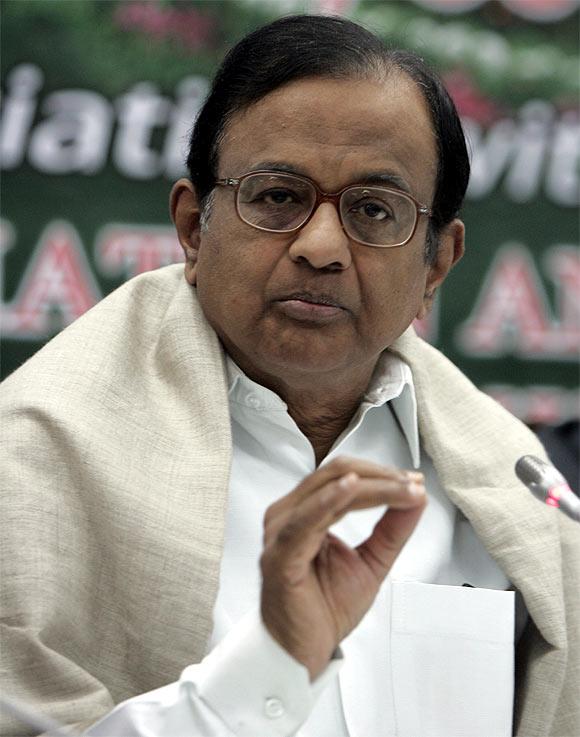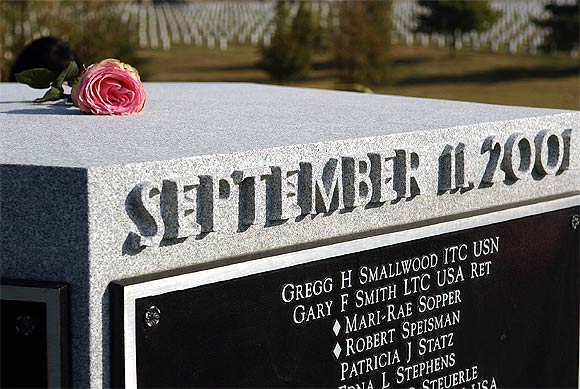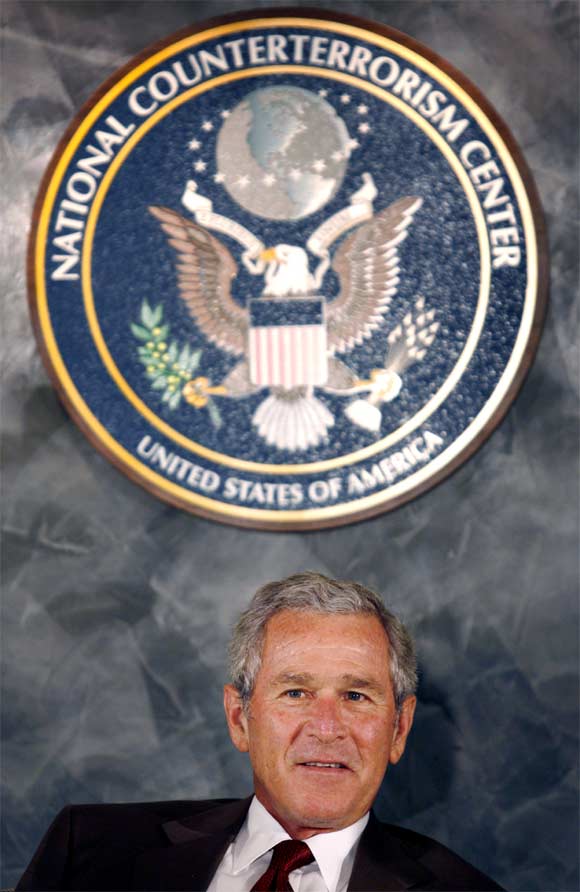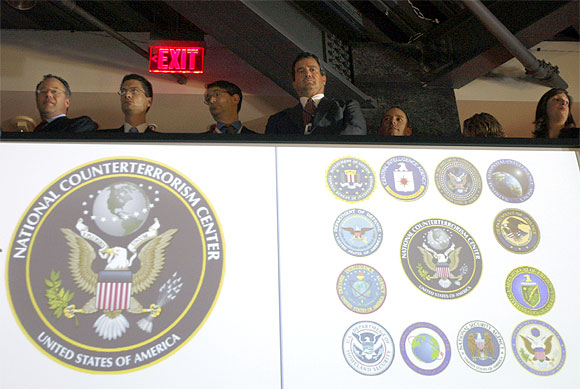With the National Counter-Terrorism Centre getting a nod from the government, Home Minister P Chidambaram has fulfilled his dream of becoming India's counter-terror czar. But his efforts to pattern this body on the lines of the one in the United States, which was formed after 9/11, has failed and how! B Raman analyses
Before 9/11, there was a counter-terrorism centre in the Central Intelligence Agency of the United States comprising officers from various agencies that formed part of the counter-terrorism community of the nation. It worked under a CIA officer. Its task was co-ordination of the functioning of the counter-terrorism divisions of various agencies to facilitate the analysis, assessment and fusion of the intelligence relating to terrorism flowing from different agencies and ensure effective follow-up action. Its main role was in prevention. It had no role in investigation and prosecution.
When it was created, this Centre was placed under the CIA for the following reasons:
Before 9/11, the conventional wisdom in the US was that threats from terrorists would be mainly to US nationals and interests abroad. Since the CIA was an external intelligence agency, it was felt that the nodal set-up for the co-ordination of follow-up action should function under the supervision of the CIA.
...
How PC tried to emulate US counter-terrorism centre and failed
Image: The National Counter-Terrorism Centre was set up in the US after the 9/11 attacksPhotographs: Reuters
The enquiry by the National Commission appointed by the then US President George Bush into the 9/11 terrorist strikes brought home to the US the dangers posed to the homeland security from home-grown terrorists as well as terrorists based abroad. It also revealed deficiencies in the co-ordinating roles of the director of central intelligence, and of the CTC of the CIA.
It was felt that there was no effective analysis, assessment and fusion of the intelligence flowing from the counter-terrorism divisions of the various agencies and no effective and co-ordinated follow-up to neutralise the threats revealed by the flowing intelligence.
The National Commission enquiry led to the following decisions:
To create an NCTC to co-ordinate the functioning of the counter-terrorism divisions of all agencies, which form part of the counter-terrorism community and to co-ordinate follow-up action to prevent acts of terrorism.
To divest the director of the CIA of his responsibilities as the director of central intelligence, and to create a post of director, national intelligence directly under the president to co-ordinate the functioning of various intelligence agencies.
To place the NCTC under the supervision of the director of national intelligence and not under the heads of any of the intelligence agencies which will continue to have the responsibility for the collection of terrorism-related intelligence.
How PC tried to emulate US counter-terrorism centre and failed
Image: George W Bush, who was the president of the US during the 9/11 attacks, at the NCTC in VirginiaPhotographs: Reuters
Since 2005, the US counter-terrorism architecture is as follows:
Each agency has its own counter-terrorism division for the collection, analysis, assessment and fusion of intelligence and follow-up action.
The NCTC co-ordinates the functioning of the counter-terrorism divisions of all agencies and ensures co-ordinated follow-up action. Its role is preventive and not in investigation and prosecution.
The NCTC functions under the director of national intelligence. The heads of the agencies have no control over its functioning.
The GC Saxena Task Force on intelligence revamp, set up by the Indian government in 2000, studied the working of the CTC of the CIA and recommended the creation of a similar counter-terrorism centre to be placed in the Intelligence Bureau consisting of officers of various agencies and headed by an IB officer. The government created it in the IB, but for reasons not clear, called it a multi-agency centre and not a counter-terrorism centre. It did not get going for a long time because of the reported reluctance of the Research and Analysis Wing and multiple intelligences to depute their officers to work in the MAC under an IB officer.
How PC tried to emulate US counter-terrorism centre and failed
Image: Staff at the National Counterterrorism Center in McLean, VirginiaPhotographs: Reuters
The 9/11 terrorist strikes exposed deficiencies in the functioning of the CTC of the CIA. Normally, the recommendation of the Saxena Task Force for the creation of a CTC in the IB should have been re-examined in the light of the 9/11 strikes in the US and the exposed deficiencies in the functioning of the CTC of the CIA, which led to the decision to create the NCTC under the director of national intelligence. This was not done till the 26/11 terrorist strikes in Mumbai.
The 26/11 terrorist strikes in Mumbai revealed more or less the same deficiencies in our counter-terrorism architecture as the deficiencies in the counter-terrorism architecture of the US revealed by the 9/11 terrorist strikes. Namely, inadequate intelligence and lack of co-ordinated follow-up action even on the intelligence that was available. In his first statement to the Lok Sabha on the 26/11 terrorist strikes after taking over as the Home Minister P Chidambaram said that the responsibility for follow-up action on available intelligence was found to be diffused.
Shortly thereafter, he had visited the US to study the working of the Department of Homeland Security and the NCTC, both of which came into being after 9/11. He came back a strong votary of two ideas: For the creation of a separate Ministry of Internal Security patterned after the Department of Homeland Security of the US and for the creation of an NCTC patterned after its US counterpart.
How PC tried to emulate US counter-terrorism centre and failed
Image: Chidambaram wanted to set up at counter-terror centre on the lines of the one in US post the 26/11 attacksPhotographs: Reuters
Chidambaram's ideas differed in one important respect from the counter-terrorism architecture created in the US. In the US, the newly set up director of national intelligence oversees the functioning of the NCTC. Chidambaram reportedly wanted that the entire counter-terrorism architecture, including the proposed NCTC, should function under the minister for home affairs till his idea of a Ministry of Internal Security was accepted and implemented.
That is, he wanted the national Security adviser to be divested of all counter-terrorism responsibilities and the home minister to be made the counter-terrorism czar of the Government of India.
There was speculation in the media at that time that MK Narayanan, the then NSA, viewed this as a negative reflection of his handling of the 26/11 terrorist strikes and strongly opposed the ideas of Chidambaram. There was a long examination of Chidambaram's ideas. What has come out on January 12, 2012, as a result of this examination is neither an ass nor a mule, but something in between and not recognisable.
How PC tried to emulate US counter-terrorism centre and failed
Image: Media reports suggested that MK Narayanan, former NSA, viewed in negative reflection Chidambaram's handling of the 26/11 strikesPhotographs: Reuters
There will be an emaciated-at-birth NCTC, which will not be independent, but will form part of the IB. Thus, there will be no independent supervision over the performance of the follow-up action role. The NSA will have no responsibility for counter-terrorism. As desired by him, Chidambaram will be the czar for counter-terrorism, but he will be a czar in Indian colours, not given the necessary tools for being an effective czar.
In the US too, the NSA has no responsibility for counter-terrorism. This role is performed by an adviser on homeland security to the president who is commonly referred to as the adviser on counter-terrorism.
The proposed NCTC is unlikely to improve our capability for preventive action through effective follow-up action on the intelligence collected.
(The writer is the additional secretary (retd), cabinet secretariat, Government of India, New Delhi, and, presently, director, Institute For Topical Studies, Chennai, and Associate of the Chennai Centre For China Studies)







article